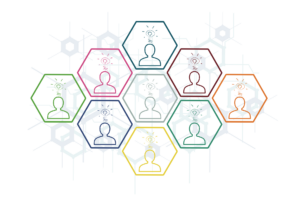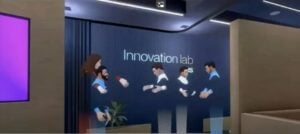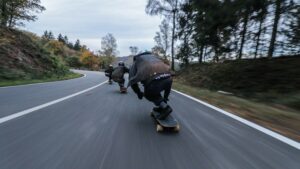Yet, this is a complex and challenging task for both managers and teams in the innovation field, and for the company overall. It is a sensitive, mental balancing act that looks to require executives to explore new opportunities while exploiting existing capabilities. It is this balance between exploratory (radical) and exploitative (incremental) that is key to the manager’s ability to multitask.
In the article, The Ambidextrous Organization from the Harvard Business Review, it is posited that the most successful organizations, “separate their new, exploratory units from their traditional, exploitative ones, allowing them to have different processes, structures, and cultures; at the same time, they maintain tight links across units at the senior executive level. Such ‘ambidextrous organizations’ allow executives to pioneer radical or disruptive innovations while also pursuing incremental gains.” This in essence creates a balance between breakthrough innovations and processes while not cutting back on the company’s traditional business.
Building An Innovation Culture
So how can one build an ambidextrous organization? In a recent piece, All Things Innovation’s Seth Adler spoke with Volvo’s Mike Hatrick on how innovation starts with the employees of an organization. As we know, the people that work for a business are some of its greatest assets. In today’s world there is a struggle with professional burnout, and Hatrick alluded to the word “resilience” as being an important part of today’s world. Specifically, he states, “I think resilience within the job and after the pandemic is absolutely critical.”
Another important topic involved the culture of an organization as a whole. To Hatrick, changing an entire company culture isn’t an easy task and, most certainly, can’t happen overnight. He advised that the best way to start the process of change was to start it with a few individuals. Working with these would evolve to small teams. “Grow your tribe. Get some successes. Build, build, build – and actually, over time, you build a culture,” he says.
Aligning Ambidextrous Leadership
At a past Front End of Innovation (FEI) conference, the practice of ambidextrous leadership was explored in one of the sessions. “Ambidextrous leadership: from theory to actualization,” was presented by Micah Tindor, Senior Director Kelley Blue Book Instant Cash Offer at Cox Automotive. Tindor looked at how a business leader might process and activate ambidextrous innovation within an organization to create a pipeline of innovation success. Tindor’s session discussed how to actualize ambidextrous innovation, taking it from academic theory to repeatable process. Exploration innovation is essential to disrupt a market and maintain business leadership, but the deployment of a disruptive innovation into a business unit must be aligned to the business unit’s planning cycles, strategy, and capabilities.
“Ambidextrous leadership has to align with the front end of innovation to be successful,” says Tindor. “When I think about ambidextrous leadership, in particular the innovation element, I think about both sides of the fence. I think about the innovation team, their goals and challenges; and the business side, and what my business goals are, and how they sometimes merge and meet in the middle, and sometimes they don’t.”
Adding The Balance of Ambidexterity
Collaboration is an important part of the process of ambidextrous innovation. It is this balance between personnel, departments and processes that can lead to both achieving large scale projects while making the small, incremental and iterative steps that lead to innovation. We asked ChatGPT for several tips on how to leverage ambidexterity in an organization:
- Foster an atmosphere of collaboration: Encourage cross-team communication and project collaboration to ensure that ideas are shared across departments, disciplines, and perspectives.
- Develop a culture of experimentation: Create an environment where new ideas can be tested and iterated on without fear of failure or punishment for taking risks.
- Embrace divergent thinking: Provide opportunities for employees to think outside the box by offering workshops on creativity, brainstorming sessions, hackathons, etc.
- Leverage technology: Implement tools like AI/ML algorithms to help generate innovative solutions faster and more efficiently than traditional methods alone can provide.
- Establish clear objectives: Make sure everyone is working towards the same goal by setting measurable targets with specific deadlines so everyone has something tangible to work towards together as a team or organization as a whole.
Adapting to the Three-Legged Stool
Ambidexterity in innovation is a key capability for organizations to stay competitive in today’s fast-changing markets. Adaptation and a faster response time are important to gain this skill. It also requires organizations to be able to identify, nurture, exploit, and leverage new ideas from different sources, while also maintaining existing capabilities. Organizations must have processes that allow them to quickly adapt their strategies in order to capitalize on new opportunities or respond rapidly when faced with changing market conditions.
The challenge can be that often there are different structures, cultures and processes for both the development of radical innovation in the future and incremental innovations of a more short-term variety. As noted in the article, “Innovation Ambidexterity and the Three-Legged Stool,” “Each type of innovation requires different—often opposing—structures, cultures, and processes. Thus, to become ambidextrous, companies must create a balanced mix of all three, each a leg in a three-legged stool.”
The article, written by Professor Janet Tinoco and published in the Pepperdine Graziadio Business School Journal, notes that the business process portion of the stool is what can ultimately bind the structure and culture together, to form a more solid mix for both types of innovation to thrive. Ultimately, “Firms can transform and achieve ambidexterity in innovation by employing prudent business processes that cumulatively impact radical and incremental innovation, thereby building the essential third leg of the stool.”
Video courtesy of IESE Business School
Contributor
-

Matthew Kramer is the Digital Editor for All Things Insights & All Things Innovation. He has over 20 years of experience working in publishing and media companies, on a variety of business-to-business publications, websites and trade shows.


























































































